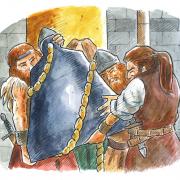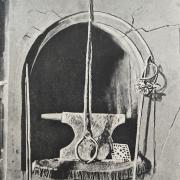Dr Tizzy Camillieri says back pain is one of the most common ailments afflicting her patients
About 19 in 20 cases of sudden onset low back pain are classed as non-specific. There is no ‘specific’ problem or disease that can be identified as the cause of the pain, hence its name. It is thought that in some cases the cause may be a sprain (an over-stretch) of a ligament or muscle or maybe due to other minor problems in the structures and tissues of the lower back. However, the origins of the pain are impossible to prove by tests and so, it is usually impossible to say exactly where the pain is coming from and what is causing it.The severity of the pain can vary from mild to severe. It often comes on quickly, is exacerbated by movement and improves on lying down. In most cases it improves quickly, however, once the pain has eased or gone it is common to have further episodes in the future.Current UK guidelines are clear that routine tests such as x-rays and scans should not be done if the diagnosis is made of non-specific low back pain. These should only be requested if there are symptoms and signs to suggest that there is another cause to the pain. The key way to managing this condition is with positive attitude and through self-management. Exercise and keeping going is also fundamental to a full recovery. It is advised that you should continue with normal activities as much as possible, up to a point that doesn’t cause a lot of pain. If you have a job the advice is to get back to work as soon as possible. Returning to work often helps to relieve pain by getting back to a normal pattern of activity and providing a distraction from the pain.Several trials have been done which have shown that you are likely to recover more quickly by getting moving again and getting back to work as soon as possible. Also you are less likely to develop chronic (persistent) back pain if you keep active when you have back pain rather than resting too much.Another essential part to managing non-specific back pain is by using analgesia (pain control). It is best to take them regularly, rather than only when the pain is very bad. This increases the likelihood that the pain is well controlled, thereby enabling you to exercise and keep active for longer. Simple over the counter painkillers like paracetamol and non-steroid anti-inflammatories (NSAIDs), such as ibuprofen, are the principle types of medication which should be used in the first instance (if you are able to tolerate these and have no medical conditions which contra-indicate their use). Other treatments include hot baths and heat pads as well as cold packs. Patients can also choose to get involved in a structured exercise programme (to improve their pain and increase the strength of their back muscles, which helps prevent further relapses). Spinal manipulation and acupuncture are other recognised forms of treatment.If the pain becomes worse, persists beyond 4-6 weeks or if the symptoms change then it is important for you to consult your GP.As a general rule of thumb the recovery period for non-specific back pain is usually within a week. In about 7 in 10 cases, the pain has either gone or has greatly eased within four weeks and in 9 out of 10 cases the pain has gone or greatly eased within six weeks.
Something more serious?Here are some of the symptoms to watch out for, which could imply that something more serious is going on- Pain that develops gradually and worsens over days or week.- Pain that is constant and which does not ease by lying down.- Any associated weakness, numbness or pins and needles in a leg or foot.- n Stiffness in addition to pain in the mornings, that lasts for more than 30 minutes after getting out of bed.- Numbness around the anus.- Bladder/bowel symptoms such as loss of bladder/bowel sensation, and urinary and faecal incontinence.- Onset of pain in a person over 50 years, or under 20 years of age.- Pain that disrupts sleep.- Associated symptoms of fever, weight loss or night sweats.


























